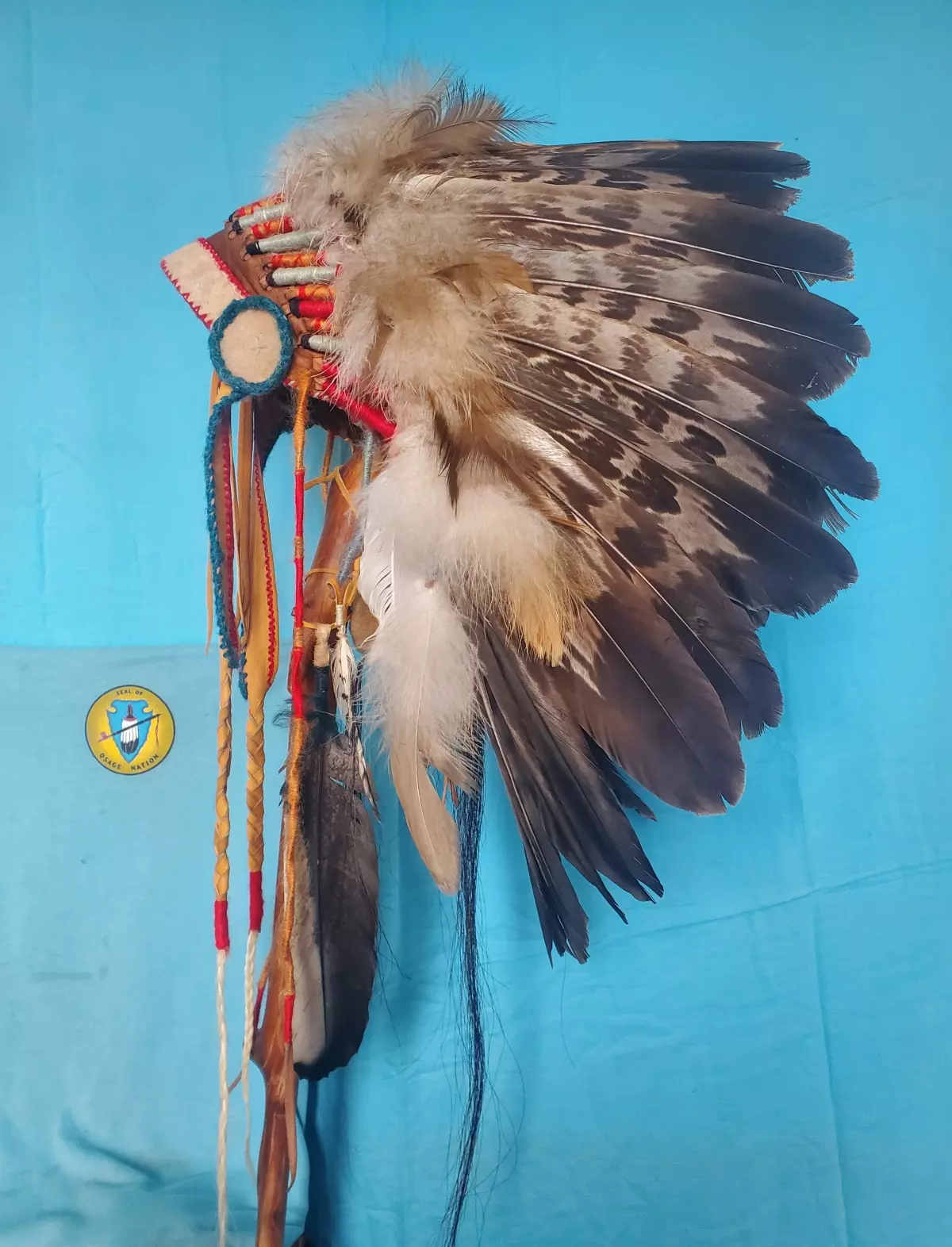Avian Influenza
Community Health & Education

Community Health & Education
What is HPAI?
Highly Pathogenic Avian Influenza (HPAI) is a type of bird flu that spreads rapidly among wild birds and poultry and which causes disease and mortality. The H5N1 strain has caused large die-offs, especially in migratory and domestic birds, and has also infected some mammals. In January 2025, the first U.S. human death from H5N1 was reported.
Why It Matters for Tribal Communities
Tribal members involved in hunting, livestock raising, cultural practices, and wildlife management may face a higher risk of exposure. Following safety guidelines and using personal protective equipment (PPE) can help reduce this risk.
This Avian Influenza Tribal Information Hub provides resources to help communities stay informed, prevent HPAI spread, and address concerns related to cultural and subsistence activities.
Printable Flyers
Understanding Exposure Routes
Exposure routes for HPAI include:
- Direct contact with infected birds and their bodily fluids (saliva, nasal secretions, or feces)
- Contaminated surfaces (clothing, shoes, tools)
- Inhalation of airborne virus particles in enclosed spaces
- Consuming raw or undercooked poultry, eggs, or unpasteurized milk contaminated with the virus (See CDC food safety recommendations)
- Contact with infected mammals
Symptoms in Humans
HPAI infections can range from mild to severe:
Mild Symptoms:
- Red or irritated eyes (conjunctivitis)
- Fever, cough, sore throat, congestion
- Muscle aches, fatigue
- Nausea, vomiting, diarrhea (less common)
Moderate to Severe Symptoms:
- High fever, difficulty breathing
- Pneumonia, respiratory failure
- Seizures, confusion
- Multi-organ failure, sepsis
Stay Informed
Federal agencies monitor HPAI detections. Stay updated by reviewing reports of AI detections in your region, including in wild birds, poultry, mammals, and livestock. Also, keep track of human cases.
Identifying & Reporting
Signs in Poultry & Livestock
- Weakness, low energy, or loss of appetite
- Nasal discharge, swelling, or purple discoloration
- Respiratory problems
- Strange behavior or trouble moving
- Death
Signs in Wild Birds & Mammals
- Readily approached
- Inability to fly or move
- Swimming or walking in circles
- Neurologic signs such as twisted neck or irregular head movements
- Death
Not all infected birds show symptoms, so always take precautions. Wear PPE when handling birds.
Report Sick or Dead Birds
- Tribal Wildlife Management Agency: Contact your Tribe for reporting guidelines.
- Federal & State Agencies: Call 1-866-4USDA-WS (1-866-487-3297) to reach USDA-APHIS Wildlife Services or contact your State Veterinarian Office.
Include in your report
1. Location
2. Species & Symptoms Observed
3. Photos or Videos (if possible)
Tips to Prevent HPAI Spread
Effective sanitation and the proper use of personal protective equipment (PPE) is essential for both protecting both people and wildlife and preventing spread of HPAI.
Wash Hands
Practice regular handwashing with soap and water. If unavailable, use hand sanitizer containing at least 60% alcohol.
Separate Equipment
Use designated tools and equipment for specific areas to prevent cross-contamination. Disinfect shared equipment before and after use.
Wear PPE
Use disposable gloves, protective shoe covers or boots, protective clothing, eye protection, and N95 respirators to reduce inhalation of particles.
Designate Areas
Clearly separate “clean” areas, such as feed storage and bird handling zones, from “dirty” areas, including waste disposal or contaminated equipment zones, to minimize cross-contamination risks.
Clean & Disinfect
Clean and disinfect surfaces, equipment, and clothing before and after each use with EPA-approved disinfectants (e.g., Pine-Sol, accelerated hydrogen peroxide, or bleach diluted in a 1:32 ratio).
Safe Waste Disposal
Dispose of bedding, manure, and other waste in sealed bags or designated composting areas to minimize environmental contamination.
HPAI PREVENTION:
Steps to Clean & Disinfect
HPAI Prevention & Response:
Responding to Community Concerns
Community Education Goals
Respond to community-specific concerns, such as safety for hunters and cultural practices, and offer risk reduction strategies.
Highlight preventative actions, such as avoiding contact with sick birds, reporting unusual deaths, using PPE, biosecurity, and practicing good hygiene.
Encourage Reporting suspected cases and provide contact information for the appropriate Tribal or state agency or USDA APHIS.
Address Human Health and provide information on health risks, symptoms, when to seek medical advice, and preventative measures.
Correct misinformation, such as fear of contracting HPAI through cooked poultry.
Provide support such as education materials, HPAI testing, PPE, biosecurity materials, and financial assistance or help connect community members with state or federal services .

Strategies for Community Education
Educate community members and respond to concerns about HPAI, preventative actions, recognizing symptoms, human health risks, and reporting. Strategies for community education can include:
Share information through social media, news bulletins, or during community events. See the CDC Avian Influenza Social Media Toolkit.
Offer information sessions or workshops for those that regularly come into contact with wildlife.
Provide regular updates from trusted sources (i.e., CDC, USDA, and local public health departments) to keep the community informed about the status of the outbreak.
Involve trusted community leaders in spreading awareness and addressing concerns.
Risk Reduction while Hunting & Harvesting
Tribal hunters and harvesters may be exposed to Highly Pathogenic Avian Influenza (HPAI) through contact with infected birds, droppings, or contaminated surfaces. However, these cultural and subsistence activities can be continued with minimal risks by taking proper precautions. Wearing protective gear and avoiding contact with sick or dead birds, can help prevent the spread of the virus and keep both communities and wildlife safe.
Role of Hunters in Early Detection
Hunters are often the first to notice unusual bird behavior, such as sick birds or mass die-offs. Reporting these signs to Tribal wildlife agencies or public health authorities helps prevent further spread and protects both wildlife and communities.
Safe Hunting Practices
Follow these precautions to reduce your risk:
- Avoid handling sick or dead birds – Do not hunt or eat animals that appear ill.
- Use PPE – Wear gloves and other protective gear when handling game.
- Clean game in an open-air space – Process game outdoors to avoid enclosed contamination.
- Wash hands & tools – Use soap and water or alcohol wipes after handling game.
- Disinfect surfaces & equipment – Clean all knives, tables, and tools after use.
- Separate raw & cooked meat – Store uncooked game away from ready-to-eat foods.
- Cook meat thoroughly – Poultry should reach 165°F internally to kill viruses and bacteria.
- Dispose of waste safely – Properly discard carcasses and contaminated materials.
- Clean up before meeting others – Wash hands, change clothes, and disinfect gear to prevent spreading contaminants.”
- See Additional Recommendations for Hunters
Safe Egg Harvesting
Follow these additional precautions while collecting eggs from wild birds:
- Avoid nests with sick or dead birds – Do not harvest eggs from nests in areas with birds that appear ill.
- Avoid damaged eggs – Do not use eggs with damaged shells
- Use PPE – Wear gloves and other protective gear when collecting eggs. Change gloves to avoid transmitting the virus between nests
- Disinfect eggs – Use Clorox wipe to disinfect eggs immediately after harvest. Wash eggs in soapy water and sanitize them using a diluted bleach solution before consumption.
- Cook thoroughly – Eggs should reach 165°F internally to kill viruses and bacteria.
Stay updated with Alaska subsistence migratory bird harvest regulations and avian health updates.
Protecting Poultry, Pets & Livestock
Hunting activities can introduce HPAI to domestic animals. To prevent spread, follow biosecurity measures such as cleaning clothing and gear before contact with poultry or pets. See Protecting Poultry & Livestock for more details.
Protecting Poultry & Livestock
For many Tribal communities, poultry and livestock are essential for food security and economic stability. An HPAI outbreak can cause significant losses in animals and pose health risks to people. Preventative measures and rapid response are key to protecting both livestock and the communities that rely on them.
Resources
USDA Defend the Flock Resource Center: Tools and resources for to support proper biosecurity practices for poultry raising.
USDA HPAI in Livestock: Resources for enhancing biosecurity, laboratory testing, and financial assistance.
Healthy Farm Healthy Agriculture: Provides resources for training and developing a biosecurity plan including HPAI prevention, detection, and response strategies in livestock by species.
Stay Informed
Federal agencies monitor HPAI detections. Stay updated by reviewing reports of AI detections in your region, including in wild birds, poultry, mammals, and livestock. Also, keep track of human cases.
Risk Reduction for
Cultural Practices
During HPAI outbreaks, extra precautions can help protect Tribal communities by reducing risks of exposure while participating in cultural practices.
-
Culturally Relevant Outreach: Develop regionally and culturally appropriate outreach materials. Share information about HPAI risks and prevention methods with community members involved in cultural activities.
- Community-Led Action: Support community lead monitoring and response. Involve cultural leaders in developing response strategies.
-
Promote Safe Handling: Encourage the use of gloves and proper hygiene when handling birds or animal parts used in ceremonies. Avoid using materials from sick or dead animals.
-
Clean and Disinfect Tools: Ensure that hunting equipment, ceremonial tools, and other shared items are cleaned and disinfected thoroughly.
- Prevent cross-contamination: Keep feathers and other ceremonial items separate from food to avoid contamination.
-
Use of Feathers and Birds: Take extra precautions when using feathers, bird parts, or whole birds in regalia, ceremonies, or crafts. Ensure these materials are cleaned and disinfected properly. For example, spray feathers with a mild disinfectant solution and dry in the sun.
- Knowledge Preservation: Document and share traditional knowledge about impacted species to sustain cultural practices for future generations
National Eagle Repository
Following the HPAI outbreak, the National Eagle Repository implemented new policies requiring all birds to be tested for HPAI before distributing eagle parts to Tribal members.
Osage Nation headdress, Derrick Duke, Copyrighted, All Rights Reserved.
Additional Resources
NAFWS Resources
NAFWS provides training and support through the Wildlife Health Initiative to help Tribes manage wildlife health and respond to disease outbreaks. Training sessions at regional and national conferences cover HPAI testing and biosecurity. Check the Event Calendar or contact NAFWS staff for details.
Government Partners
Many government agencies provide support for HPAI prevention and response, with some offering direct assistance to Tribal Nations.
Animal Health Contacts: List of Animal health contacts including veterinarian, laboratory, and emergency response.
USDA Animal and Plant Health Inspection Service (APHIS): Offers funding, emergency response training, and diagnostic testing through the National Animal Health Laboratory Network. Tribes can also request training and support from the Office of the National Tribal Liaison.
Center for Disease Control and Prevention (CDC): Offers information on HPAI and human health, Provides updates on human HPAI cases, public health strategies, and communications tools.
Additional resources may be available through the Bureau of Indian Affairs (BIA), U.S. Geological Service (USGS), Fish & Wildlife Service (FWS), Environmental Protection Agency (EPA), and Occupational Safety and Health Administration (OSHA).
Funding Opportunities
Tribes can access funding for disease prevention and response through programs such as:
- NADPRP – Supports Tribal projects on animal disease preparedness.
- NAHLN – Funds disease surveillance and prevention.
- AMR Dashboard – Supports projects on antimicrobial resistance in livestock and poultry.
- Other – Other funding may be available for disease response, biosecurity, and education.

